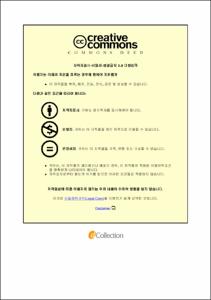JEJU Repository
General Graduate School
Interdisciplinary Programs
Interdisciplinary Postgraduate Program in Koreanology
제주 굿놀이의 유희적 작법
- Abstract
- 제주도 굿놀이의 양상을 살피고 유희적 기법과 의미를 고찰하고자 하였다. 굿놀이는 신을 맞아 그 모습을 보이고 놀려서 신과 사람이 함께 신인동락 하는 제차이다. 그런데 굿놀이에 등장하는 신은 대부분 비루하고 딱한 모습으로 등장한다. 그렇기 때문에 굿놀이를 통해 사람은 자신을 이해하고 함께할 신을 만날 수 있다.
제주도 굿놀이는 유희성을 중심으로 의례의 제차로 따져서 살펴보자면 맞이형, 개별형, 확장양상 등으로 나누어서 볼 수 있다. 첫째, 맞이형은 맞이 제차와 굿놀이의 연관성을 살펴보면서 확인할 수 있다. 맞이에서는 놀이로 신을 놀리고 신의 모습을 드러낸다. 특히 맞이에는 소제차로 질침을 하고 그 질침은 놀이와 얽혀 있는 경우가 많다. 제주굿 맞이 제차는 상위신에 해당하는 경우에도 놀이와 유사한 극적행위가 연행된다. 그 대표적인 사례로 초공맞이가 있다. 둘째, 제주도 굿놀이에는 명칭부터 놀이라고 하여 개별적으로 연행하는 굿놀이로 , , , , 등이 있다. 개별형 굿놀이의 대표적인 사례로 큰굿의 , , 등을 들어 굿놀이의 유희성을 살펴볼 수 있다. 셋째, 제주굿에서 오락성과 유희적 성격을 설명하자면 석살림 제차를 빼놓을 수 없다. 석살림에는 놀판굿이라는 독특한 놀이가 있다.
굿놀이에서 신을 만나 놀리는 연행에는 유희성이 중요하다. 그 유희성이 굿놀이에서 작용하는 방식은 직관적이며 일상적이고 주술적이다. 굿놀이의 등장인물은 일상을 벗어나는 일탈로 변화를 추구하면서도 일상을 회복하는 것으로 삶을 치유한다. 그래서 굿놀이의 연행은 공감과 소통의 유희성을 추구한다고 할 수 있다. 굿놀이가 벌어지는 동안에는 실패가 성공이 되고, 싸움이 화해가 되는 역설의 미학이 작용한다. 굿놀이는 변화를 추구하며 그 변화는 회복과 상생을 통해 균형을 이루게 한다.|This paper examines Gutnori in Jeju to study the playful dramaturgy of the local Gutnori and its significance. Gutnori refer to shamanic rituals where deities and people entertain themselves together by playing a joke on the deities after greeting them. The deities in Gutnori mostly appear to be unhandsome and pitiable. Therefore, Gutnori enable people to encounter deities who may understand and accompany them.
Gutnori in Jeju are classified into Maji type [Maji referring to greeting the deities], individual type, and open type based on the courses of the shamanic rituals with a focus on their playfulness. Firstly, the Maji type can be identified by studying the relatedness of Maji and Gutnori. The course of Maji plays a joke on the deity through nori [performances of folk entertainment] and encourages it to reveal itself. Specifically, Maji includes the sub-course of Jilchim [clearing the path that a deity will take to descend], which concurrently take place with nori in many cases. Even for the deities in the upper class, the course of Maji in Jeju’s gut [shamanic rituals] involves dramatic acts that are similar to nori. A representative example is found in Chogongmaji. Second, Jeju’s Gutnori feature individual performances whose titles end with nori, as shown in Segyeongnori, Jeonsangnori, Yongnori (or Gallyongmeori), Yeonggamnori, and Sanongnori. Representative cases of these individual Gutnori include Segyeongnori, Jeonsangnori, Yongnori (Gallyongmeori), and other courses of Keungut [large-scale shamanic rituals] that exhibit the playfulness of Gutnori. Third, to account for the entertaining and playful characteristics of Jeju’s gut, Seoksallim cannot be left out. Seoksallim involves a unique nori called Nolpangut.
In the performance of playing a joke on the deities in Gutnori, playfulness plays a key role. How this playfulness works in Gutnori is direct, ordinary, and magical. The characters appearing in Gutnori heal themselves through the restoration of their everyday lives while longing for changes by diverting from those everyday routines. In this sense, the performances of Gutnori pursue the playfulness concurrent with empathy and communication. While Gutnori are performed, the aesthetics of paradox is activated where failure turns into success and argument into reconciliation. Gutnori look to changes and it is these changes that realize a balance through restoration and coexistence.
- Issued Date
- 2023
- Awarded Date
- 2023-08
- Type
- Dissertation
- Affiliation
- 제주대학교 대학원
- Department
- 대학원 한국학협동과정
- Advisor
- 허남춘
- Table Of Contents
- 국문초록 7
Ⅰ. 서론 1
1. 연구목적 및 문제제기 1
2. 선행연구 4
3. 연구방향 8
4. 연구자료 및 한계점 10
Ⅱ. 제주도 굿놀이의 양상 17
1. 제주도 굿놀이의 범주 17
1) 굿놀이의 개념 17
2) 제주도 굿놀이의 특성 22
3) 제주도 굿놀이의 기준요소 24
2. 제주도 굿놀이 유형 26
1) 제주도 굿놀이 목록 제시 27
2) 제주도 굿놀이 종류 개괄 31
3) 제주도 굿놀이 유형 분류 49
3. 제주도 굿과 굿놀이 52
1) 제주도 굿의 종류와 굿놀이 53
2) 굿의 기능과 놀이 55
3) 본풀이와 놀이 58
Ⅲ. 제주도 굿놀이 구조와 연행 분석 60
1. 제주굿 맞이와 놀이 60
1) 맞이의 구조 60
(1) 제주도 굿 맞이 종류 60
(2) 맞이와 놀이의 관계 64
2) 질침과 극적연행 69
(1) 초공질침 70
(2) 삼시왕질침 72
(3) 군벵질침 74
2. 개별형 굿놀이 사례 분석 75
1) 따라 하기 유형 75
(1) 놀이의 구조 76
(2) 등장 인물 분석 78
(3) 유희적 구성 요소 81
2) 찾아 내기 유형 90
(1) 놀이의 구조 91
(2) 등장인물 분석 95
(3) 유희적 구성 요소 96
(4) 와 와의 관계 99
3) 겨루기 유형 100
(1) 놀이의 전개구조 100
(2) 등장인물분석 103
(3) 유희적 구성요소 104
2) 속이기 유형 107
(1) 놀이의 서사분석 108
(2) 등장인물분석 111
(3) 유희적 구성 요소분석 114
Ⅳ. 제주도 굿놀이의 유희성과 의미 117
1. 제주도 굿놀이의 유희성 117
1) 직관의 유희성 117
2) 일상의 유희 123
3) 주술적인 유희 126
(1) 때리기와 인정걸기 126
(2) 생산 풍요 기원과 나눔 130
4) 공감과 소통의 유희 133
(1) 제주도 굿놀이의 향유 정서 133
(2) 굿놀이의 참여자 135
(3) 굿놀이의 연행자 138
2. 제주도 굿놀이의 유희적 연행의 의미 140
1) 역설의 미학 140
(1) 드러난 욕망으로 인한 일탈 142
(2) 내재된 불안의 해소 143
2) 상생의 신명 144
(1) 공동체 집단의 정서 표출 144
(2) 신성성과 유희성의 공존 146
Ⅵ. 결론 152
- Degree
- Doctor
- Publisher
- 제주대학교 대학원
- Citation
- 양인정. (2023). 제주 굿놀이의 유희적 작법.
- Appears in Collections:
- Interdisciplinary Programs > Interdisciplinary Postgraduate Program in Koreanology
- 파일 목록
-
-
Download
 제주 굿놀이의 유희적 작법.pdf
기타 데이터 / 1.09 MB / Adobe PDF
제주 굿놀이의 유희적 작법.pdf
기타 데이터 / 1.09 MB / Adobe PDF
-
Items in Repository are protected by copyright, with all rights reserved, unless otherwise indicated.